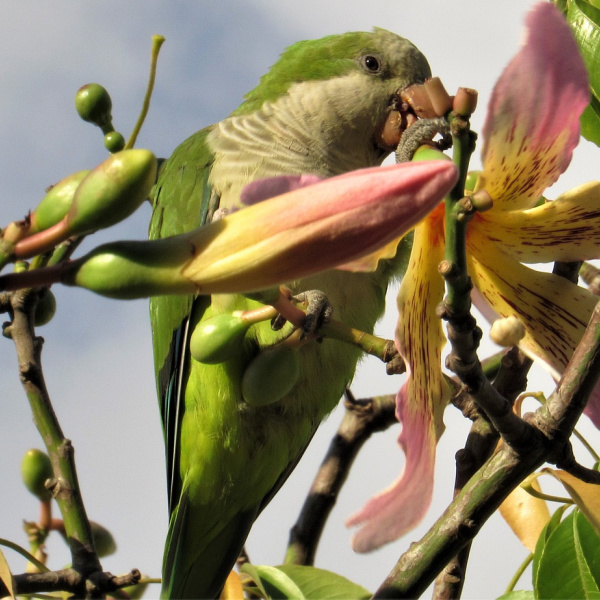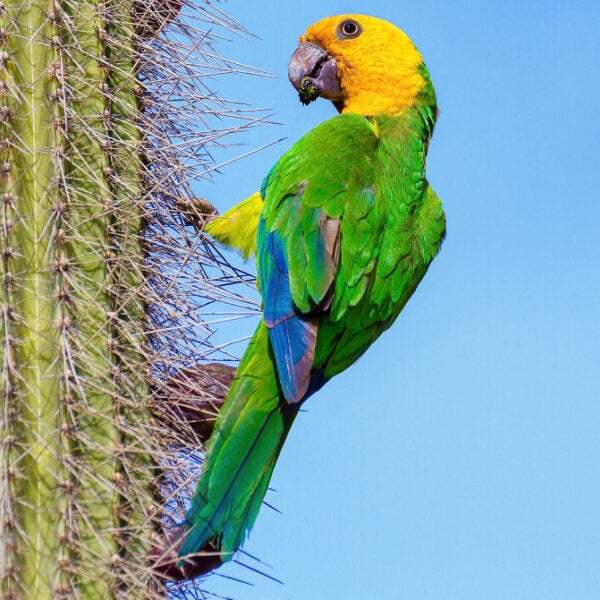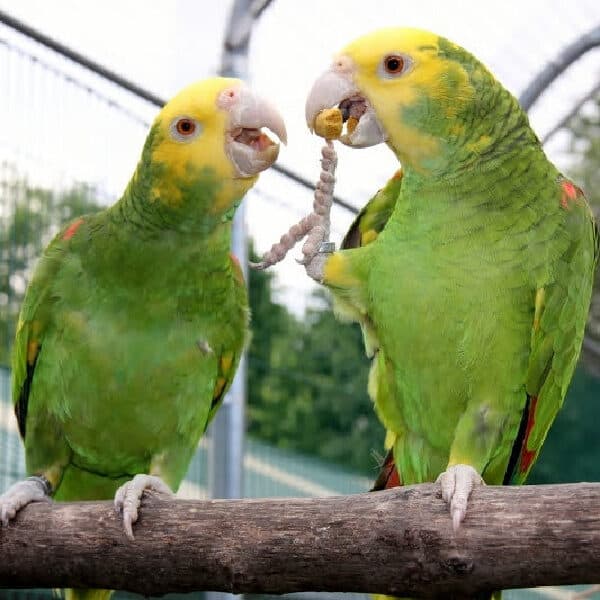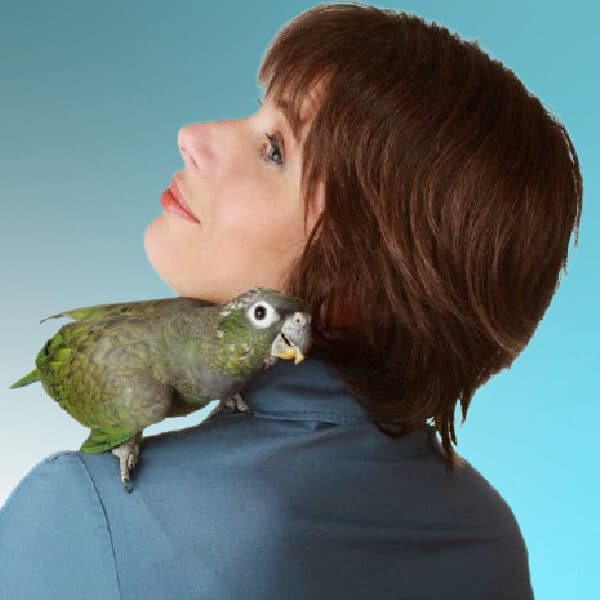Last Updated on by Mitch Rezman
Linda F asks,
Hi, As spring approaches we look to protect furry as well as feathered friends. Any suggestions on Frontline and heart guard type products that are safe around parrots and toos (Cockatoos) when used on three little dogs?
Are the two above mentioned harmful when used on a dog that lives in the same house as a bird?
Thank you for all help I have received as my CAG (Congo African Grey, goffie (Goffin Cockatoo) learn to share our life together.
Would not have made it as smoothly this far without your good advice and Birdy Brunch. Thank you again. Linda,
Micha and Stewie
Hi Linda
Thank you for the kind words
In that dogs (mammals) and birds (Aves) have different integumentary systems (fins, fur, feathers, scales) treatments should not cross over.
Everyone likes to think of themselves as being prepared for disaster and certainly life’s cuts and scrapes.
I’ve personally sutured a dog in a garage (after 5 minutes of training by my vet 🙂
I’ve yanked shards of glass out of more than one dogs paw and got them bandaged over the years.
Sutures are easy to come by if your vet is a fellow musher but for the most part many dogs, and I presume cat medical emergencies, can be treated with a human first aid kit.
Removing a little fur on a dog while rapidly getting a wound bandaged, is something a dog will get over pretty quickly.
Unless your birds are exposed to mosquito bites which is unlikely because they are indoors, the chance of incurring heartworm disease is slim to none.
Parasitic roundworms named Dirofilaria immitis affect mostly dogs but may manifest themselves in ferrets, cats and other prey animals.
Once the roundworms mature they can be found in the heart, ergo the name heartworm but they can also be found in the lungs and blood vessels between the lungs in the heart.
It can take up to six months for the actual parasite to develop in a dog’s heart.
Thus heart guard is certainly not a necessary prophylactic treatment for birds.
There is a topical flea treatment you can get from the vet.
SevenDust sprinkled on the ground helps kill the fleas in the sand.
I’ve used Adams flea and tick spray with success directly on birds who have fleas, but make sure to avoid their eyes and mouth.
Aams will work for feather mites and lice as well.
Best
MitchR
Migrating from spring to summer
We talk about parrots being equatorial animals and how life in North America, for example, screws up their instinctual expectations for things like light cycles and temperature.
So you would think with summer here all those problems would go away.
Some do, but now we face new challenges.
Escape routes
Summer is the time of open doors and windows, screens instead of glass and much more in and out traffic typically.
Flighted birds pose the risk of escape by flight, and summer increases that risk no doubt.
But when your wing clipped 240g feather ball chews through the screen where you left the window open in the guest room on the second floor, your wing clipped bird could easily ride the warm summer thermals (those air things that keep un-motorized gliders afloat) and end up in the next state before you knew she was gone.
If you open doors and windows, it’s best to keep your bird in a cage, flighted or not.
Ceiling fans
A fan can be a human’s best friend. I’ve seen videos of birds who like to play in the airflow. That said, I’ve also seen birds who were placed under or in front of a fan with every good intention by its keeper.
While keeping the air around the bird cool the bird’s feathers were always getting lifted.
A “ruffled” feather needs to be put back in its place, and this is done by preening.
https://youtu.be/sIR-q9GsXcg
With the unceasing airflow from the fan comes when the unceasing amount of preening, which has in the past triggered plucking.
I advise you to keep your birds out of the path of direct airflow.
Ceiling fans fall under the category of super hazard for flighted birds. Veterinarians call the result “shredded tweet”
For more ways on how we kill and injure our pet birds, read this.
Shade
We discussed the need for full-spectrum lighting on a regular basis.
What could be better than the real deal, the sun?
You know that thing that can fade paint, burn skin, crinkle car interiors? Yep, that sun.
Sunlight is good, direct sunlight is not – make sure your bird always has access to shade.
If your cage is near a window check it throughout the day to make sure there is always a shady spot somewhere in the cage where your bird can seek refuge.
Mosquitoes
West Nile virus is usually transmitted through mosquito bites and can cause an avian condition resulting in death.
Keep your bird protected from mosquitoes If you take him or her outside in a cage outside on an unprotected deck potential exposure of your bird to mosquito bites greatly increases.
An outdoor aviary may require an additional layer of screening.
Burning the burgers
Grilled food always tastes better, who doesn’t like a good barbecue?
Whether the barbecue is at home or your bird travels with you remember the smoke from campfires and barbecues may be toxic to your bird.
Check to see that direct inhalation is not occurring through an open window, too.
The Varments
For us, the circle of life usually starts at the supermarket and ends at our kitchen table. For a feral cat, a raccoon a nearby Hawk, the circle of life can be seconds away from your bird’s cage. Please don’t leave your bird alone outside for a moment.
The ability to maintain a high and constant body temperature enables birds to exploit a remarkable range of habitats — tropical, temperate, and polar.
This achievement is not without cost, however.
The “expense” of metabolic heat production must be repaid by taking insufficient energy to balance what has been expended, and mechanisms must be available to shed excess heat when necessary.
If the environmental temperature falls, birds raise their metabolic rate to prevent their internal temperature from falling as well.
In contrast, if the environmental temperature becomes too hot, birds must mobilize water to lose heat through evaporative cooling (as we do when we perspire) and avoid death from overheating.
Since birds have no sweat glands, heat must be lost through the respiratory tract by panting, or in non-passerines (birds with zygodactyl feet) by the rapid vibration of the upper throat and thin floor of the mouth (“gular flutter”).
To minimize the energy cost of temperature regulation (“thermoregulation”), birds use a variety of morphological and behavioral traits to adjust their rate of heat loss and heat gain.
Unfeathered (uninsulated) body surfaces serve as important sites for heat exchange with the environment.
When heat-stressed, therefore, some birds, such as Black Vultures, excrete onto their unfeathered legs to increase heat loss by evaporation.
Emergency liquid foods for caged birds are:
- sugar water
- lemonade (noncarbonated)
- milk and egg yolk
- pediatric Pedialyte
To administer:
- Use a plastic eyedropper or syringe (no glass or needles!).
- Hold your bird’s head back 45 degrees. Do not put pressure on the chest, because doing so may inhibit her breathing. Instead, cradle her body and lightly tilt her head back.
- Administer one drop at a time to avoid choking your bird.
- Stroke your bird’s throat to help her swallow.
- Repeat the process, giving up to 7 drops for small birds (canaries), 10 to 15 drops for medium birds (parakeets & small conures) and up to 5 teaspoons for large birds (cockatoos).
written by mitch rezman
approved by catherine tobsing
your zygodactyl footnote
Author Profile
Latest entries
 The Traveling BirdJune 26, 2025Can You Name 5 Parrot Species That Are Living Wild in the USA?
The Traveling BirdJune 26, 2025Can You Name 5 Parrot Species That Are Living Wild in the USA? Bird BehaviorJune 26, 2025How is it Parrots Are Problem Solvers Social Animals and Even Use Tools?
Bird BehaviorJune 26, 2025How is it Parrots Are Problem Solvers Social Animals and Even Use Tools? Bird & Parrot AnatomyJune 25, 2025How a Tiny Chemical Modification Makes Parrots Nature’s Living Paintings
Bird & Parrot AnatomyJune 25, 2025How a Tiny Chemical Modification Makes Parrots Nature’s Living Paintings PigeonsJune 20, 2025How Do Parrots Thrive in Cities Outside Their Native Habitats?
PigeonsJune 20, 2025How Do Parrots Thrive in Cities Outside Their Native Habitats?




